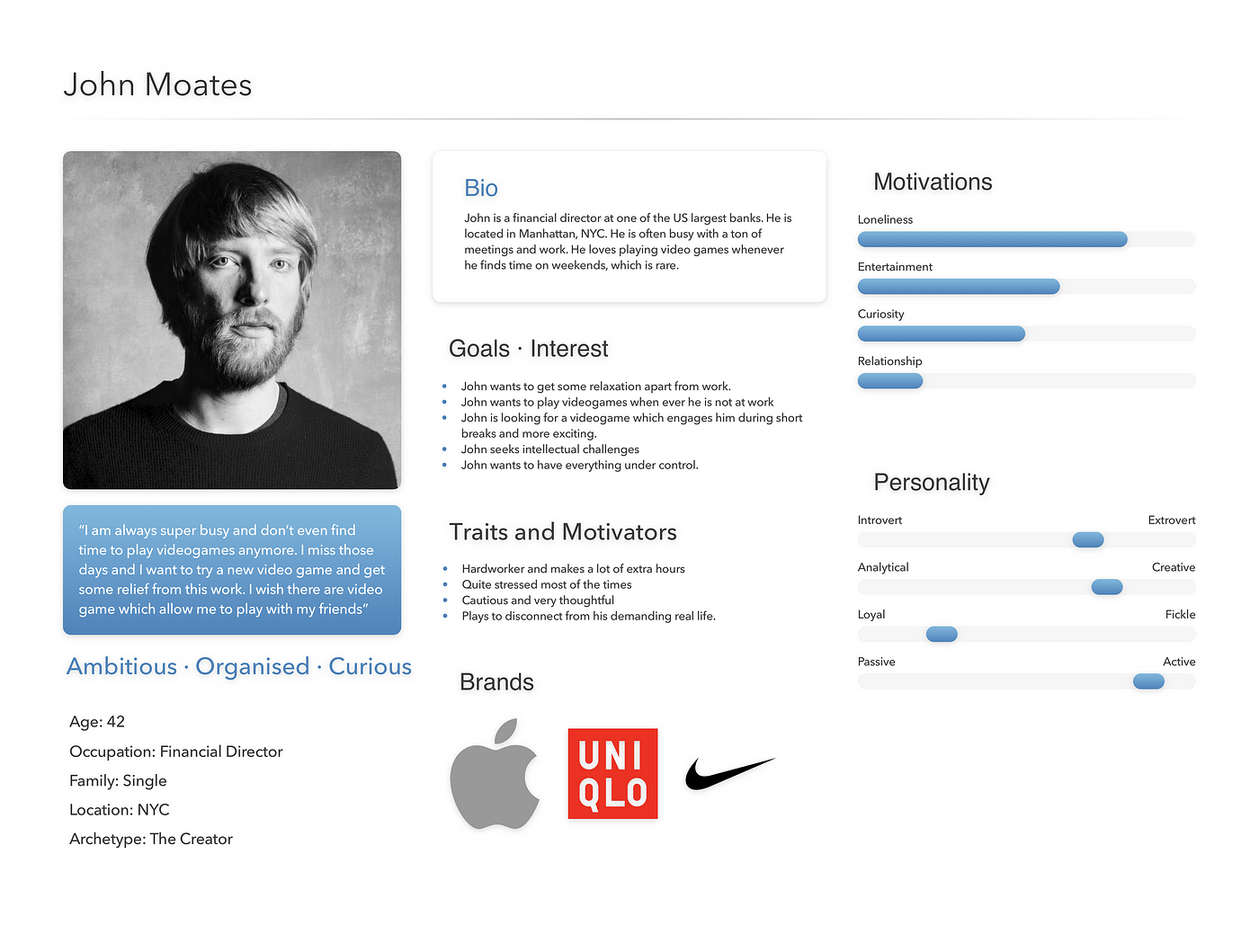For any business to grow, it is vital to understand their customers and the journey they take when interacting with the business/product.

Just like we use GPS maps to guide us when we travel, Customer Journey Maps help the businesses to understand the user pain points and identifying important things such as :
- Understand various customer touch points and Business needs at different stages in the sales funnel.
- Identifying the logical stages and the gaps between the ideal customer experience and the current experience.
- Prioritizing the development priorities and allowing the business to concentrate spending efforts on what features matter the most.
In this article, I will explain the essential parts of a customer journey map with the help of an example.
1. Choosing the right Persona
No two journey maps are the same. It varies from business to business and the design varies on the product you are planning to map. The customer journey map can be designed for a single customer persona or it can also be done for a segment of customers. Once a customer journey is designed for a persona, it can be applied to other customers by establishing a common understanding of customer stages, goals, touchpoints, opportunities, etc.
Let us consider the scenario of a potential videogame buyer. For the purpose of the article, I will keep the stages simple and the persona which we will consider for this journey map is John, who is a financial director. He is 42 living in NYC with a high income and is often super busy. One can go as detailed as possible for the persona.

2. Creating the stages of the Journey Map
Now that we have decided the persona, let’s move on to the next important piece of deciding what stages you want in the journey map. Each stage or phase is used to represent a vital goal your customer is trying to achieve as they progress through the journey. Stages can be high level or they can be more detailed.
For this journey map of a newly launched videogame, let’s start creating various stages which John goes through. A simple layout can be as follows:

- Previous experience with the games
- Awareness of our new videogame (1st touchpoint)
- Choosing the videogame
- Purchasing the videogame
- Playing the videogame
- Sharing the experience.
3. Key Features under each stage of the journey
Each stage in the journey has various key elements. All these are represented in vertical lanes and the stages as you know, are represented in horizontal lanes. All these elements can be categorized under 3 zones :
Zone 1: Actions, Mindsets, and Emotions
- Actions represent what the customer is doing at that particular stage of the journey.
- Mindset includes all the things which are going in the customer’s head about the product/ service.
- Emotions are to capture the predominant mood of the user as he moves from one stage to another.
Let’s look at our example and how these different elements can potentially look like. For the purpose of this journey map, let’s look at one of the 6 stages ‘Choosing the videogame’
- Actions by John include things like check the rating of the game, check the artwork, check the price of the game, look for deals, read the description and play the trailer, etc.,
- Few thoughts in his mind could be “ mmm, the price seems fair”, “ wow !! cool artwork”, “ ahh ! this reminds me of the XYZ game ”, “ The trailer is amazing. I hope the game is too” etc.,
- Emotions in this stage could be uncertainty, indecision, deception, surprised, etc.,
Zone 2: Touchpoints and channels.
Touchpoints are the times when the customer interacts with the business or interface and channels usually mean the ways of communication or service delivery.
Coming back to the videogame example, few touchpoints and channels in these stages can include digital mediums such as a mobile app, gameplay store on Xbox, game review websites or they could be non-digital touchpoints such as advertisements, etc.,
Zone 3: Opportunities and Barriers
This zone includes opportunities which will drive growth via investing in UX improvements. The business should always craft a journey map so in a way that it can be used for action planning, meaning it will uncover various opportunities, assess the potential impact, cost, etc. and further setup investing priorities for the business.
A barrier is an optional feature which you can have at each stage. These will include all the pain points for a customer when interacting with the business at a particular stage. This can be used along with opportunities to fix the issues with the interface/business/product.
The Final Journey Map

So, as explained above these are all the key zones and the relevant features one must take care of when designing a customer journey map. So based on the type of the map, the depth, and the breadth can be tweaked and for making informed decisions on these, there are few things to be considered:
- What is the level of detail which is needed for telling the complete story to the stakeholders of the business?
- What key elements will be necessary for providing the most truthful and meaningful narrative/journey?
- What is the purpose of the journey map? Diagnose the existing issues or create a whole new customer experience?



